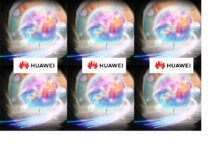ULTRARAM – is a patented, memory technology developed by Lancaster University. It exploits a quantum-mechanical process called resonant tunnelling, allowing ULTRARAM to deliver non-volatility with fast and energy-efficient write and erase, resulting in high endurance. QuInAs has been formed to, hopefully, productize it. It claims this combination of properties was thought to be unachievable until now. ULTRARAM has the non-volatility of flash, with a performance that is expected to exceed that of DRAM.
ULTRARAM uses atomically-thin layers of InAs/AlSb (Indium Arsenide/Aluminum Antimonide) to create a triple-barrier resonant-tunnelling (TBRT) charge-confining structure. The TBRT switches between a highly-resistive (locked) state (with no bias, ‘store’), to a highly-conductive (unlocked) state on application of 2.5 V across the gate stack (program/erase).
ULTRARAM uses III-V compound semiconductors. Specifically, the so-called 6.1-angstrom family of semiconductors (GaSb (Gallium Antimonide), InAs and AlSb). This allows engineering of the memory’s electrical properties to exploit the underlying physics, whilst also being capable of volume manufacture using established processes in the compound semiconductor and silicon industries. The extremely low electron-effective-mass in InAs also opens the possibility for a new high-speed embedded III-V logic to address arrays.
With its combination of low capacitance and low voltage program/erase, ULTRARAM has a switching energy per unit area that is 100x lower than DRAM, 1,000x lower than flash and over 10,000x lower than other emerging memories. ULTRARAM’s ultra-low energy credentials are further enhanced by its non-destructive read and non-volatility, which removes the need for refresh.
ULTRARAM has demonstrated degradation free operation in excess of 10 million program/erase cycles. This is due to the low-voltage, ultra-low-energy program/erase process enabled by quantum resonant tunnelling. Extrapolated retention times in excess of 1,000 years have been demonstrated and scaling of devices down to state-of-the-art feature sizes is predicted to achieve speeds that match or exceed DRAM.
QuInAs says “the $165bn pa memory market is dominated by dynamic random-access memory (DRAM, $100bn) and NAND flash ($60bn). Flash is non-volatile, retaining data when unpowered, but is slow and has poor program/erase cycling endurance. In contrast, DRAM is fast with excellent endurance, but it is volatile, and requires data to be constantly refreshed. For decades there has been a quest for a memory that combines their advantages without their disadvantages, i.e. a memory that is fast and non-volatile, with high endurance and ultra-low switching energies; a so-called ‘universal memory’. ULTRARAM has achieved these universal memory characteristics.”







